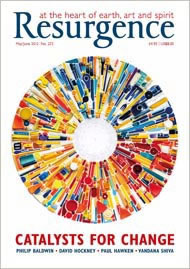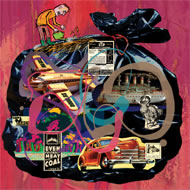The idea of the green economy is very much in vogue as governments struggle to fill the intellectual void in their preparations for this year’s Rio+20 summit. Who wouldn’t want a dose of green growth when the Great Recession is delivering a historic compression in living standards across the Western world? In reality, however, the idea of the green economy can often dissolve into a series of platitudes that avoid the need for hard thinking about both means and ends.
To fill this gap, the United Nations Environment Programme (UNEP) has released a thumping great tome, Towards a Green Economy, which helps give structure to the concept, notably by showing what investing in ‘natural capital’ really means.
In the words of the economist Partha Dasgupta, “ecosystems are capital assets. Like reproducible capital assets…ecosystems depreciate if they are misused.” But ‘natural capital’ is also profoundly different from capital stocks as understood by economists and financiers. First, its depreciation can be irreversible; second, it’s difficult if not impossible to replace a depleted natural asset with another; and third, ecosystems can collapse abruptly.
A deeper and more philosophical differentiator is that ecosystems are not, in any event, produced for the sole purpose of human benefit, which means that the very notion of ‘natural capital’ must be understood as a potentially useful metaphor and not as an underlying reality.
Instead of pursuing the will-o’-the-wisp notion of trying to put an actual price on ‘natural capital’, the UNEP team has examined and then modelled the effects on global output and environmental performance of different levels of investment in natural assets.
Currently global GDP stands at around US$69 trillion, with 20% of humanity living on less than US$2 per day and the economy consuming 1.5 times the available biocapacity. In UNEP’s ‘business as usual’ scenario, insufficient maintenance of soils, water, biodiversity and the climate means that the rate of economic growth is materially slowed. By 2050, global GDP rises to US$164 trillion and, at the same time, the ecological footprint also grows to 2.2 times the Earth’s biocapacity and a tenth of the population remains in poverty.
By contrast, an investment of just 2% of global output in environmental management will help to decouple growth from resource use so that, according to the UNEP model, whilst global GDP in 2050 rises to US$199 trillion, we cut our collective footprint by a fifth, to 1.2 times available biocapacity, and, at the same time, reduce poverty levels to 8%.
With the ‘green stimulus’ now being followed by ‘green austerity’ across the industrialised world, the UNEP report shows the real economic value of high and continued investment in environmental assets. One weakness, however, is the report’s timidity in proposing investment levels that remain too low to achieve real sustainability and human dignity for all. And you could easily make the case that with over 10% of GDP routinely invested in ‘human capital’ (through spending on health and education), a proposed investment of just 2% of GDP to sustain the natural assets of the entire planet seems somewhat stingy.
But there is a deeper issue confronting the green economy agenda. The models that have been deployed to evaluate investments in ‘natural capital’ rely on traditional understandings of how the economy and ecology work that are now obsolete. The problem lies in the fundamental misperceptions of the industrial mind, which persists in seeing both markets and Nature as “nothing more than a machine”, in the words of holistic scientist Stephan Harding.
And until recently, we believed that the natural state of this machine is self-regulating equilibrium.
In the case of the market, this is generated through perfect competition, the rational pursuit of profit maximisation, and the interplay of supply and demand. The father of modern ecology, Arthur Tansley, also placed “the great universal law of equilibrium” at the heart of his concept of the ecosystems, delivered through the dynamics of natural selection.
The problem of course is that, much as we might wish for inherently stable markets or the balance of Nature, the reality is somewhat different. “A living organism is characterised by continual flow,” explains physicist Fritjof Capra, adding that equilibrium “only exists when all these processes come to a halt: in other words, an organism in equilibrium is a dead organism.”
The end of equilibrium as an organising concept has profound implications both for ecology and for the economy. In a fascinating paper, Britain’s former chief scientific adviser Robert May and the Bank of England’s director for financial stability, Andrew Haldane, explain how the notion of the balance of Nature was the conceptual foundation of ecology in the 1960s, leading to the assumption that a community would exhibit increasing stability as the number of links in the food web grew. The direct opposite is true.
Similarly, the arbitrage pricing theory (APT) that lay behind the explosive growth in derivatives over the past decade also relied on stylised notions of general equilibrium. Allied with unprecedented computing power, this then allowed City analysts to price future risks and construct derivatives, with their risks apparently decreasing as their complexity mounted.
Yet APT is “not a theory in the sense habitually used in the sciences”, argue May and Haldane, but rather a set of “idealised assumptions” on which financial engineering was based. And it was under this mask of equilibrium that systemic risk in the financial markets was allowed to grow to unsupportable levels, eventually precipitating the global credit crunch. The belief in a self-regulating market was not only wrong, leading to a fundamental misallocation of wealth, but it also prevented vital regulatory action to build market resilience. In the ‘green economy’, this has meant, for example, that efficiency and demand reduction have been consistently overlooked as the starting points for low-carbon energy management.
Once we abandon the myth of equilibrium – in the markets and in Nature – the insights of post-industrial science can help rescue the economy from its environmental and financial dead-ends.
Certainly Andrew Haldane at the Bank of England has realised that the financial system has “shown itself to be neither self-regulating nor self-repairing. Like the rainforests, when faced with a big shock, the financial system has at times risked becoming non-renewable.”
Using ecological principles to reshape capitalism requires reinstating economic diversity as a key objective. The credit crunch has shown us all too clearly the fundamental difference between complexity and diversity, with profound implications for how we achieve financial stability. For City-watchers Michael Mainelli and Bob Giffords, the process of “deluded demutualisation” and the “rising monoculture of reckless self-interest” fundamentally weakened the resilience of the financial system – a trend that now needs to be reversed.
The looming Rio+20 summit has been set two objectives: first, to boost the green economy; and second, to bolster those institutions needed for sustainable development. If we don’t change the way we perceive the metabolism of that most important of human institutions – the global market – then our hopes for ecological renewal will be dashed.
But if we bring together the imperative of financial repair with this great opportunity to revive economic activity through environmental investment in a ‘global green deal’, then Rio might – just might – avoid the usual outcomes of international summitry: either a major bustup or the ‘damp squib’.







